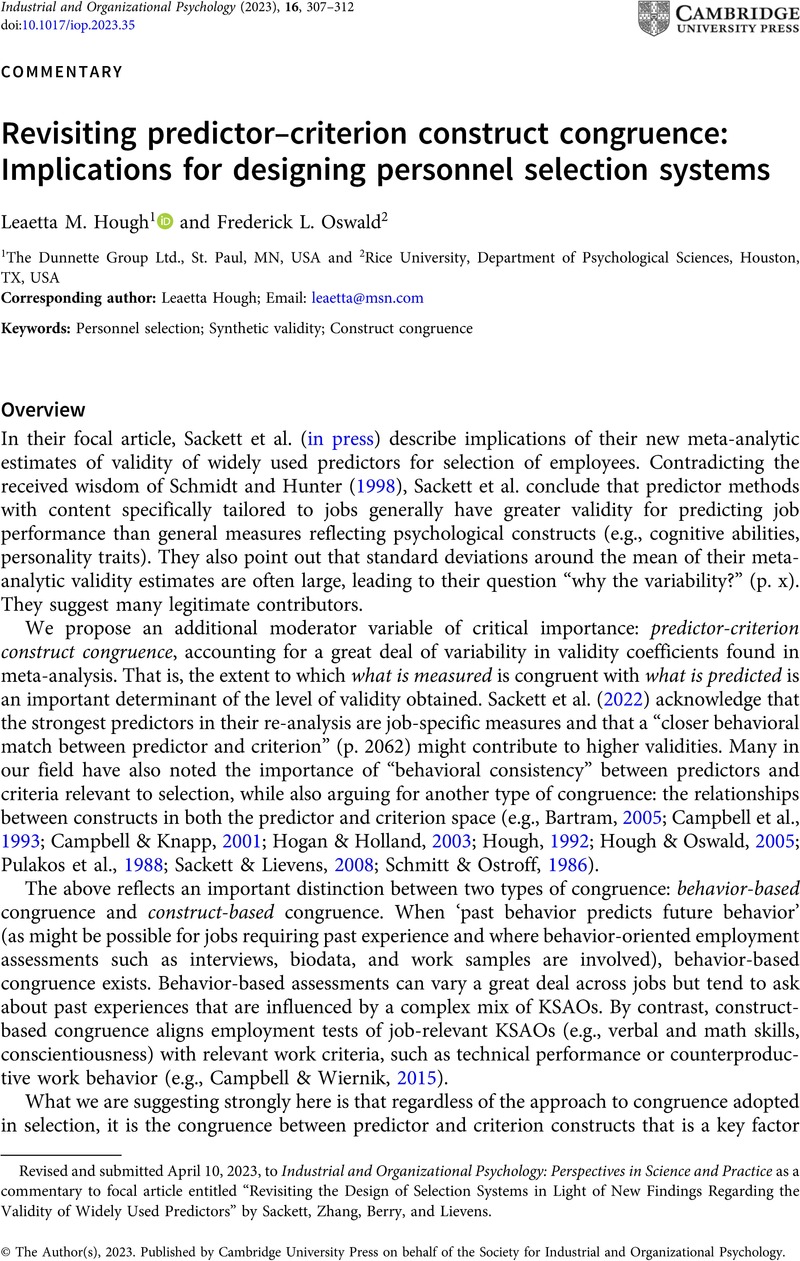Crossref Citations
This article has been cited by the following publications. This list is generated based on data provided by Crossref.
Shakeri, Iman
and
Lievens, Filip
2025.
A head‐to‐head comparison of situational judgment tests and assessment centers for measuring and predicting the same performance dimensions.
International Journal of Selection and Assessment,
Vol. 33,
Issue. 1,



